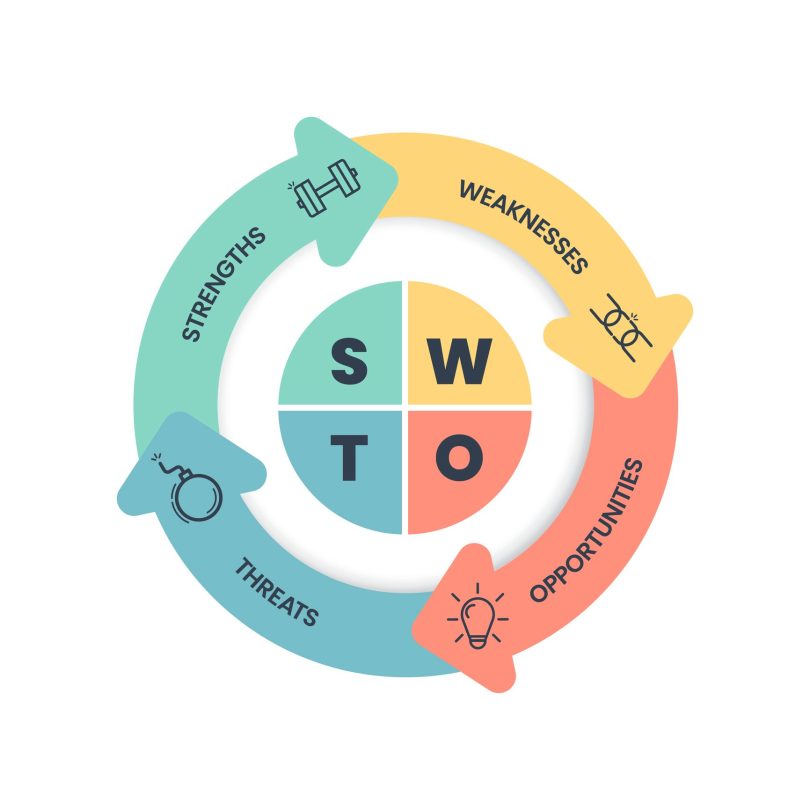January 22nd, 2024
5 ways to improve your workplace communication in 2024
Property Management
Property Management

As Property Managers know, workplace challenges can often arise unexpectedly, and no one can truly prepare you for every situation. Property Managers possess a unique ability to quickly assess issues and calmly identify solutions, all while staying on the move. Problem-solving skills are essential in this role, and while some people may naturally excel at this, it’s a skill that can be honed and refined throughout your career. We’ve compiled some of our favourite tips to help you strengthen your problem-solving abilities in the workplace.
Problem-solving skills refer to the ability to identify the root cause of an issue and the ability to find the most effective solution. While problem-solving is often seen as one specific skill, it encompasses several different features that can help make someone an effective problem-solver. These include listening, researching, creativity, decision-making, communication, and knowing when to ask for help. For Property Management, industry-specific knowledge and expertise are crucial, but many of these core problem-solving skills are transferable and will help you improve your problem-solving abilities in the workplace.
The first step in improving your problem-solving skills is to take the time to fully understand the issue at hand. Problems can often seem overwhelming at first glance, but breaking them down into smaller, more manageable elements will make them easier to address. By breaking problems down into smaller more digestible steps, you can identify when, where and why it occurred, and highlight the areas that need to be focused on. One helpful approach is to ask yourself a series of key questions:
Who: Who is involved, who caused the problem, and who is most affected by it?
What: What is happening, what is the extent of the issue, and what future implications might it have?
Where: Where did the problem occur, and does it affect anything else in the short term?
When: When did the problem arise, and is there an urgent timeline for resolution?
Why: Why is this happening?
How: How did the problem occur, and how is it impacting productivity within the team?
Another key to enhancing your problem-solving skills is considering multiple potential solutions. Rarely will one single solution solve every problem, so it’s crucial to explore various approaches. By seeking diverse perspectives and brainstorming alternative solutions, you increase your chances of uncovering unique and effective fixes to the issue at hand. This process encourages critical thinking and fosters creativity within the role. Property Managers although it may seem strange, are some of the most creative people around. Make sure to dedicate enough time to consider all options before deciding, and remember that there are no right or wrong answers — focus on crafting simple solutions from a range of viewpoints. We also recommend getting different perspectives from your team members. Every person has a unique perspective, and it’s important to encourage everyone to help; you may have the perfect solution hiding in plain sight.

Decision-making is an essential component of problem-solving, and like any skill, it can be developed. Making decisions under pressure can be challenging, but with practice, you can improve your ability to act confidently and in a timely manner. A few strategies for enhancing your decision-making include:
Plan: Having a clear plan helps you anticipate the potential outcomes of your choices.
Be assertive: Assertiveness ensures that you make decisions promptly and maintain momentum, especially when working within a team.
Consult experts: Seeking input from others can provide new insights and boost your confidence in your decisions.
Taking feedback and learning from past experiences is essential for continuous improvement in problem-solving. Feedback helps increase self-awareness, while also allowing teams to recognise areas they may have overlooked when reviewing previous problems that may have arisen. By actively seeking feedback after addressing challenges, you can gain a deeper understanding of your strengths and areas for improvement, preparing you for similar situations in the future.
Acting on feedback is just as important as receiving it. Utilize techniques such as SMART goals, action plans, and feedback cycles with managers and colleagues to put the feedback into practice. These methods help ensure that changes are realistic, achievable and measurable. Furthermore, don’t hesitate to provide constructive feedback to others when appropriate. Open, clear and constructive communication within a team is key to helping everyone improve their problem-solving abilities.
One crucial aspect of improving problem-solving within Property Management, and in general, is establishing a clear and effective communication plan. At PropertyMe, we understand that communication is key to successful property management. It impacts every aspect of the job, whether you’re interacting with tenants and owners, tradespeople, or your own team, effective communication is essential.
In the PropertyMe app, we’ve built communication into the core of our platform. Whether it be Whether you’re communicating with owners and tenants via our Inbound SMS feature, or using Message Templates for perfectly worded, fast responses, all your messages will be consolidated into the combined inbox, so everyone works off the same page.. This ensures faster, clearer communication and keeps everyone on the same page, so issues can be addressed quickly. Clear communication in problem-solving helps eliminate assumptions, misunderstandings, and potential conflicts. Another standout feature is “Mentions,” which allows you to directly tag team members on properties, contacts, inspections, jobs, and tasks. This ensures that nothing gets overlooked, and there are no assumptions about who is responsible for what. Everyone knows exactly what needs to be done.
Now, while we talk about some aspects of problem-solving, it can be hard to implement them practically in the workplace. We’ve popped together a quick guide to one of our favourite frameworks to use.
A SWOT analysis is a strategic planning tool that is used to analyse a variety of internal factors that will impact your decisions. This is useful in problem-solving as you can analyse different variabilities that may have previously been missed. To do a SWOT analysis, break down your problem with four key components: strengths, weaknesses, opportunities and threats.
Strength: This refers to the internal initiatives that are performing well. Some examples of questions to ask in the strength column can be: What do we do well? What is unique about this solution, and what features of this solution best help with the problem?
Weakness: This refers to the internal initiatives that are underperforming. Some examples of questions to ask in the weakness column are: What issues may arise with this solution? what can we improve on, what resources or lack of resources have impacted the problem, and what does this affect?
Opportunities: This is a result of your existing strengths and weaknesses, along with any external initiatives that will put you in the best position earlier. It’s helpful to consider these questions when looking at the opportunity column: What resources do we already have to improve weaknesses?
Threats: These are areas with the potential to cause more problems. Examples of questions to ask in this column include what changes to the solution may arise and what areas of the problem are cause for concern.

Our final tip for improving problem-solving in the workplace is to understand when you need help and don’t be afraid to ask for it. Knowing when to ask for help is a crucial skill to have under your belt. If you have already gone through your problem-solving steps and are still stuck at a crossroads, it may be time to ask for guidance from others who may have also experienced something similar. Whether it’s stepping aside with your manager or talking to team members, reaching out and asking for help is not a bad thing, instead, it reflects that you’re wanting the best possible solution and have a willingness to learn. Some indicators that it may be time to seek some extra help include time constraints, lack of expertise, complexity that you aren’t used to, feeling overwhelmed or if it’s a high-stakes issue.
We hope these tips have been helpful and have given you the motivation to tackle any challenges that come your way. If you have any feedback or would like to get in touch with our team, feel free to reach out to us on social media or send an email to [email protected]. We’d love to hear from you